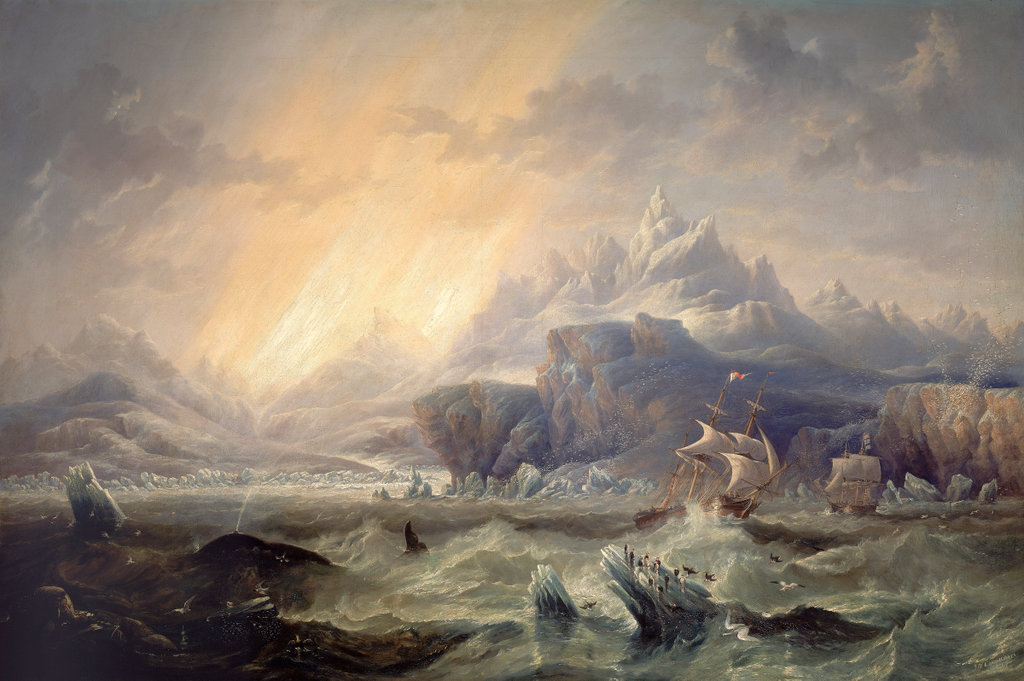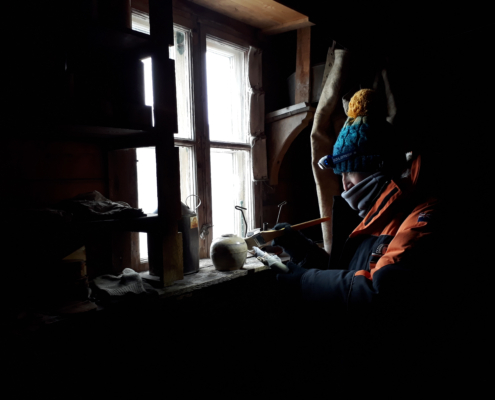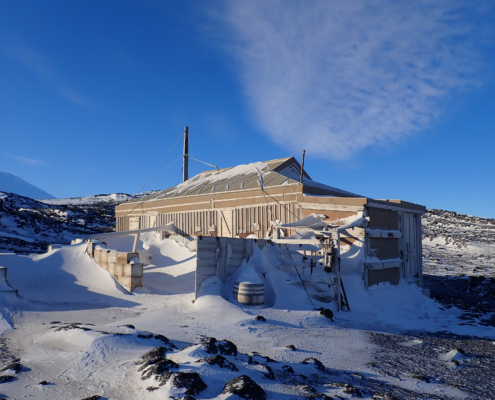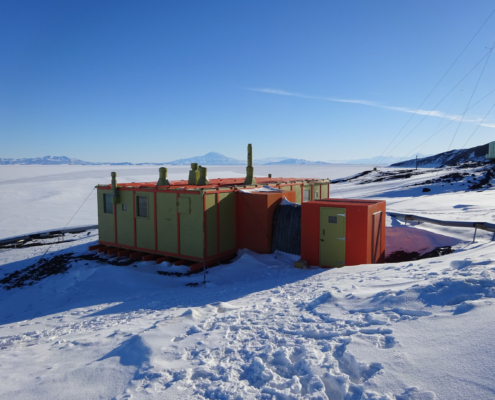Exploration of the Ross Sea
The story of Antarctic exploration in the the Ross Sea region is one of courage, scientific discovery, and human endurance. It begins with the groundbreaking expedition of James Clark Ross and continues through the heroic-era to modern times.
The Ross Sea is named after James Clark Ross, who led an expedition between 1839 and 1843 that explored the region and made significant discoveries in Antarctica.
Using two warships, HMS Erebus and HMS Terror, the expedition confirmed the existence of the Antarctic continent and advanced understanding of its magnetic properties. Key achievements included the discovery of the Ross Ice Shelf (then called the “Great Ice Barrier”), Mount Erebus, Mount Terror, and the Transantarctic Mountains. The expedition charted significant portions of the Antarctic coastline, including Victoria Land, and made valuable contributions to glaciology, magnetism, zoology, and botany.
The expedition also stands as a testament to human courage and exploration, paving the way for future Antarctic endeavours. In 1912, Norwegian explorer Roald Amundsen, a key figure in the heroic-era of Antarctic exploration, wrote of the Ross expedition:
“Few people of the present day are capable of rightly appreciating this heroic deed, this brilliant proof of human courage and energy. With two ponderous craft – regular “tubs” according to our ideas – these men sailed right into the heart of the pack [ice], which all previous explorers had regarded as certain death … These men were heroes – heroes in the highest sense of the word.”
HMS Erebus and HMS Terror in the Antarctic, by James Wilson Carmichael, 1847. Oil on canvas. © National Maritime Museum, Greenwich, London
Heroic-era and Beyond
Building on the Ross expeditions’ discoveries, subsequent explorers ventured further into the Antarctic, establishing bases that stand to this day. The sites associated with these iconic bases hold unique stories that showcase how explorers pushed the boundaries of human knowledge and endurance in one of Earth’s most challenging environments.
Explore the pages below to learn more the historic expeditions inspired by Ross’ initial voyage, the Trust’s conservation efforts to save these historic sites, and the remarkable discoveries made during their conservation. From the heroic-era of Scott and Shackleton, and on to the post-heroic era of Sir Edmund Hillary, these stories illustrate the evolution of Antarctic exploration and New Zealand’s enduring presence on the Ice.
The Ross Sea Heritage Restoration Project (RSHRP)
Learn about Antarctic Heritage Trust’s landmark conservation project – the most extensive ever conducted in polar regions. This world-leading initiative conserves iconic explorer bases and safeguards over 20,000 artefacts from the Heroic Era of Antarctic Exploration and beyond.
Borchgrevink’s Hut
Cape Adare
The base associated with Carsten Borchgrevink’s British Antarctic (Southern Cross) Expedition 1898–1900 and later, Scott’s Northern Party expedition (1911).
Scott’s Discovery Hut
Hut Point
The base associated with Commander Robert Falcon Scott’s National Antarctic (Discovery) Expedition 1901–1904.
Shackleton’s Nimrod Hut
Cape Royds
The base associated with Sir Ernest Shackleton’s British Antarctic (Nimrod) Expedition 1907–1909.
Scott’s Terra Nova Hut
Cape Evans
The base associated with Captain Robert Falcon Scott’s British Antarctic (Terra Nova) Expedition 1910–1913 and his second, and final, famed attempt for the Geographic South Pole.
Hillary’s TAE/IGY Hut
Scott Base
Hillary’s (TAE/IGY) Hut was the first building to be erected during the summer of 1956–57 to form Scott Base, which provided a base to oversee New Zealand’s involvement in the Trans-Antarctic Expedition and the International Geophysical Year.








